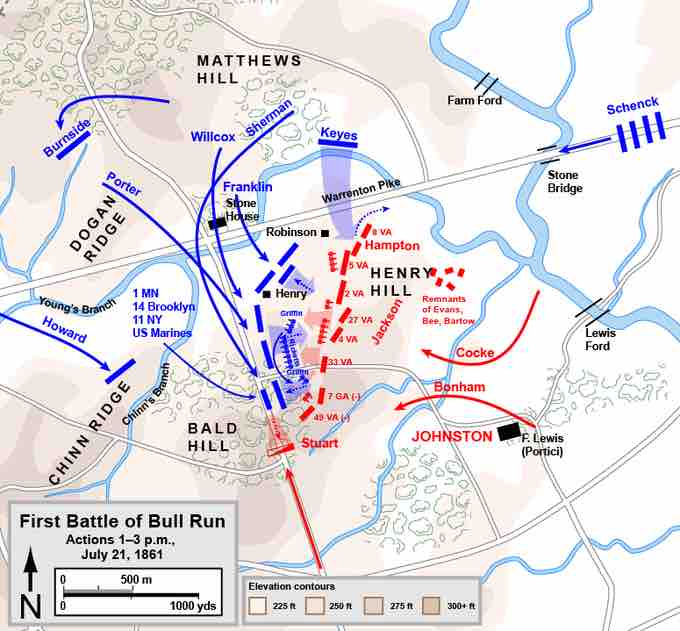The First Battle of Bull Run, called the "Battle of First Manassas" by the Confederacy, was fought on July 21, 1861, in Prince William County, Virginia, near the city of Manassas. It was the first major land battle of the American Civil War, but is also significant for demonstrating to the wider public the inexperience of both armies and the intractable nature of the conflict given the inability of either side to achieve a quick or decisive victory.
Political pressure forced Union Brigadier General Irvin McDowell, head of the Army of the Potomac, to launch a campaign against the Confederate Army of Brigadier General P.G.T. Beauregard camped near Manassas Junction. McDowell's ambitious plan for a surprise attack on Beauregard's left flank met with initial success; however, the Confederates made a successful stand at Henry House Hill reinforced by Brigadier General Joseph E. Johnston and benefited from the ingenious tactics of Colonel Thomas J. Jackson.
Confederate reinforcements under Brigadier General Joseph E. Johnston arrived from the Shenandoah Valley by railroad and the course of the battle quickly changed. A brigade of Virginians under a relatively unknown colonel from the Virginia Military Institute, Thomas J. Jackson, stood their ground giving rise to Jackson’s famous nickname, "Stonewall Jackson." The Confederates then launched a strong counterattack, and as the Union troops began withdrawing under fire, many panicked, turning the battle into a rout as McDowell's men frantically ran without order in the direction of Washington, D.C. The operations of each side were undermined by the inexperience of soldiers and officers. Additionally, both sides were sobered by the fierce fighting and many casualties, giving rise to the realization throughout the country that the conflict would not be settled by a short, decisive campaign.

First Battle of Bull Run
This figure shows the direction of Union attack and Confederate reinforcement at the First Battle of Bull Run.